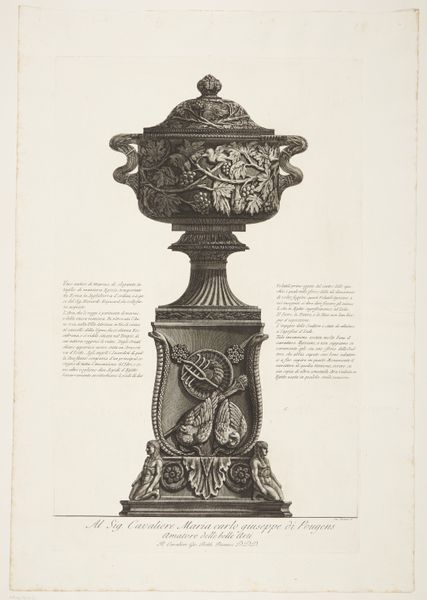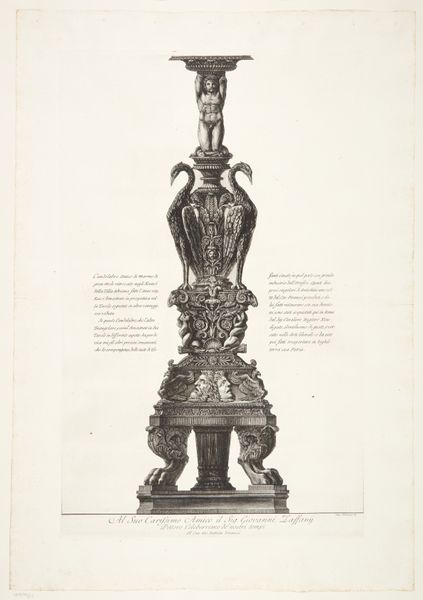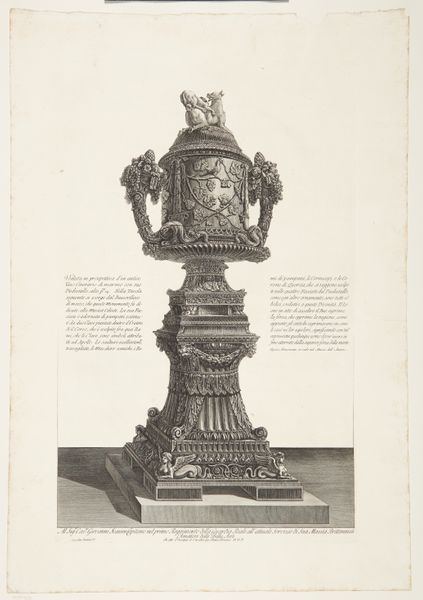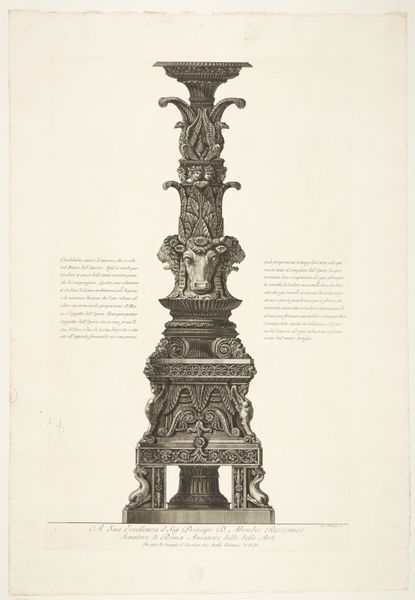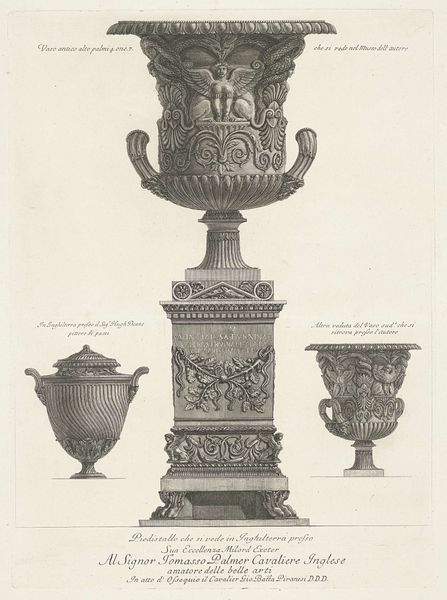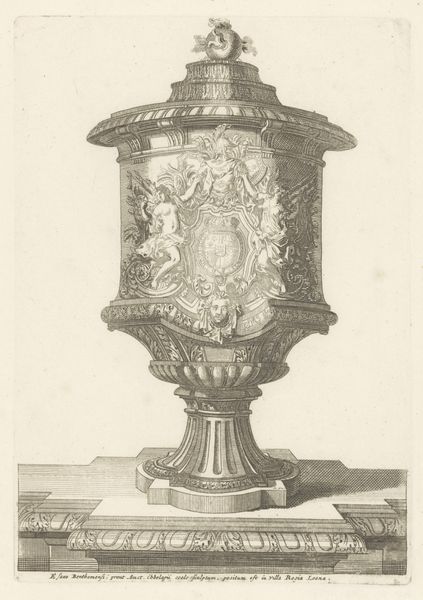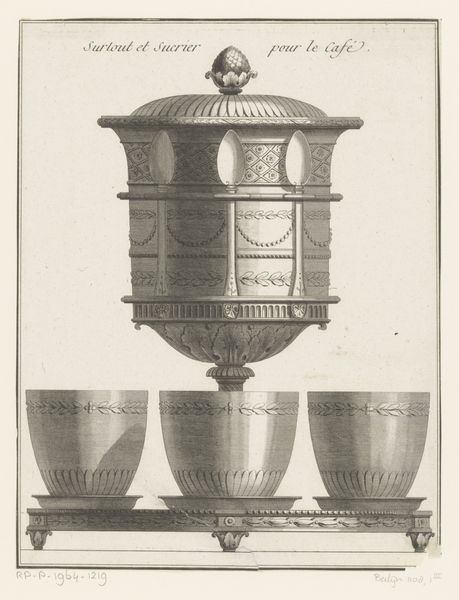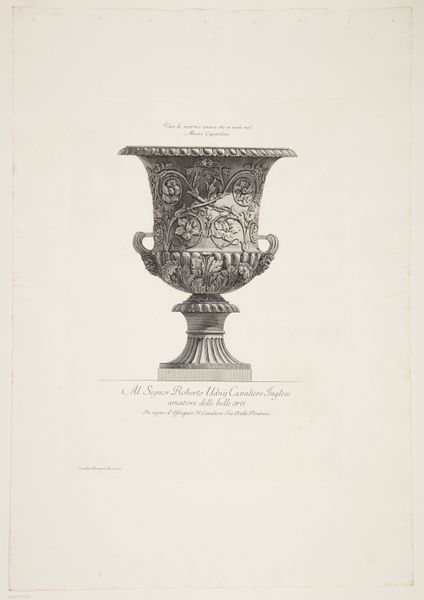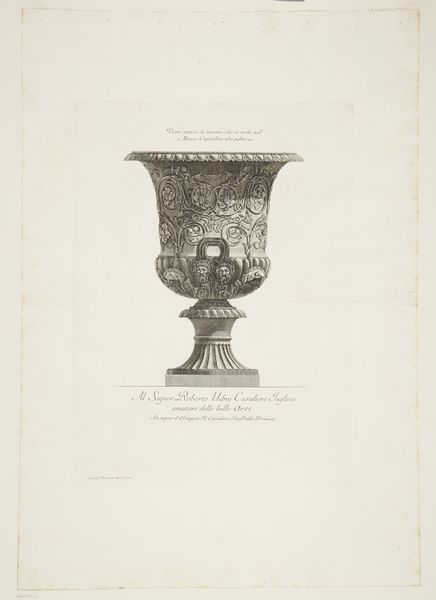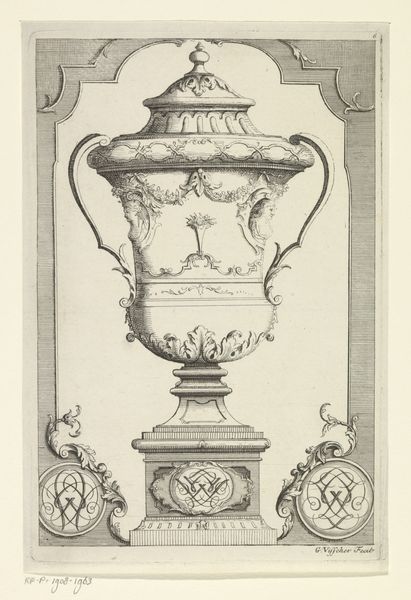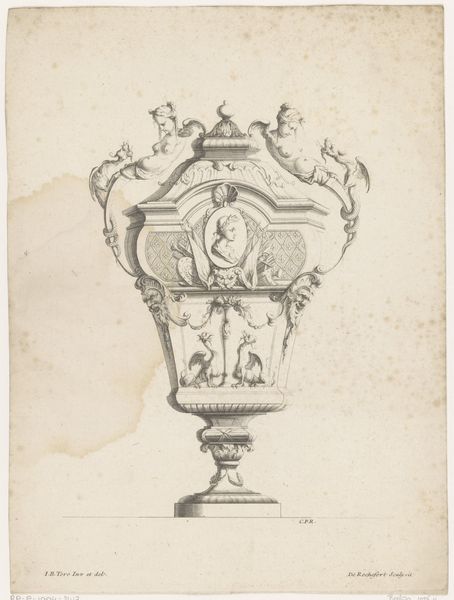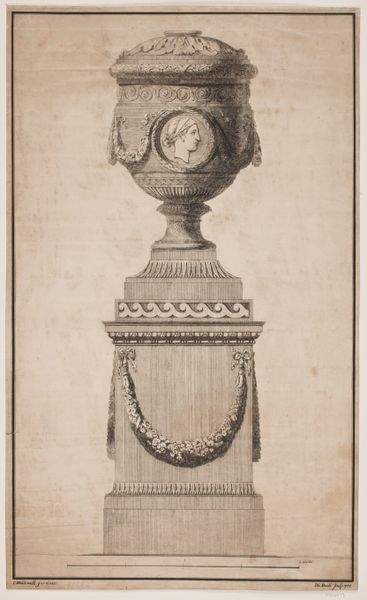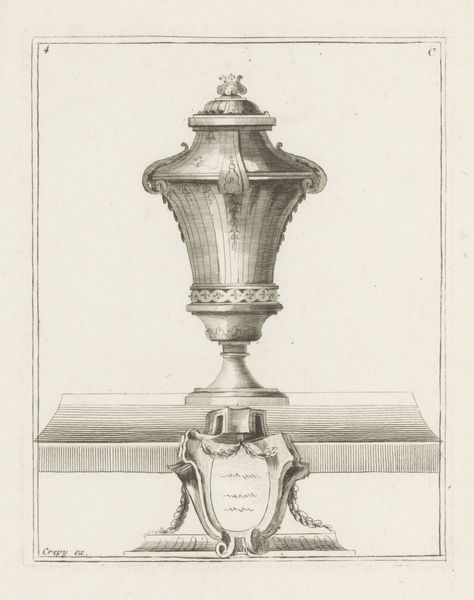
Marble vase with a frieze of fauns, excavated by Gavin Hamilton from the Pantanello, placed on a cinerary urn 1769 - 1778
0:00
0:00
print, engraving, architecture
#
neoclacissism
# print
#
old engraving style
#
form
#
line
#
engraving
#
architecture
Dimensions: 720 mm (height) x 360 mm (width) (plademaal)
Giovanni Battista Piranesi made this engraving of a marble vase around 1778. The vase itself had been excavated by Gavin Hamilton from the Pantanello. Piranesi was an important figure in the 18th-century rediscovery of classical antiquity. His prints weren't just records; they shaped how people understood Roman history and culture. The vase, decorated with frolicking fauns, sits atop a cinerary urn, a container for ashes after cremation. This combination speaks to the 18th-century fascination with ancient rituals and the afterlife. Piranesi's Rome was a city being reimagined through archaeological finds, influencing everything from art to interior design. His detailed engravings captured the grandeur of Roman artifacts. They fueled a market for antiquities and "Grand Tour" souvenirs. By studying Piranesi's work and the history of archaeology, we can better understand the social conditions that shaped artistic production and the public role of art in the 18th century.
Comments
No comments
Be the first to comment and join the conversation on the ultimate creative platform.
